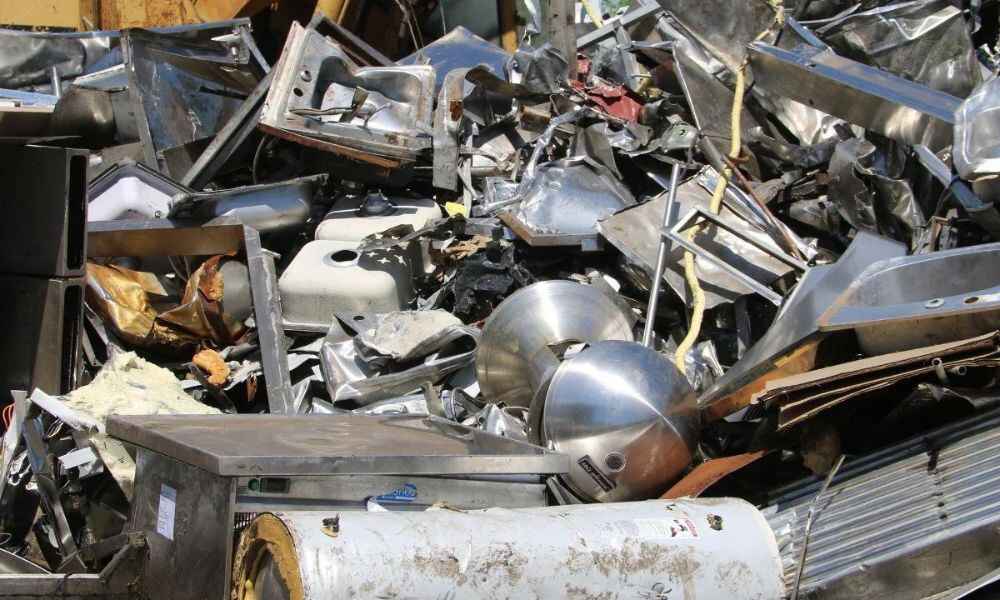The process of recycling metal stands among the most beneficial methods to protect the planet by preserving essential resources. The metal recycling process gives old scrap a new life, reducing waste and saving energy. The recycling of metals shows no reduction in quality across multiple cycles because of their ability to maintain their properties. The principles of the circular economy are perfectly aligned with this feature. Conducting sustainable metal recycling decreases climate change effects because the practice cuts down greenhouse gas emissions more effectively than extracting fresh metals. The process creates employment opportunities throughout local areas and lightens pressure on fundamental resources. The complete guide explains the recycling process for metals together with its environmental advantages and proves why this practice creates sustainable outcomes across future generations.
Why Metal Recycling Matters
Metal recycling presents three fundamental advantages:
- Resource Conservation – Reduces the need for destructive mining
- When metal is recycled, 95% less energy is needed to produce new metal.
- The practice of waste reduction allows metal recycling to prevent large amounts of metal from entering landfills yearly.
Steel along with aluminum and copper maintains high quality throughout unlimited recycling operations. Metal recycling is therefore a crucial part of the circular economy.
The Four Crucial Phases in the Comprehensive Metal Recycling Procedure
1. Collection & Sorting
Scrap metal collection starts at workplaces, construction sites and it continues with the removal of car scrap items.
- Household items (cans, appliances, electronics)
- Construction sites (beams, wiring, pipes)
- Automotive parts (engines, body panels)
Copper and aluminum are classified as non-ferrous metals, whereas iron-based ferrous metals are extracted by magnetic phases at recycling facilities. Advanced technology measuring systems and human operators guarantee the production of contaminant-free clean raw materials.
2. Shredding & Cleaning
Industrial shredders process giant metal items to achieve breakdown. This step:
- Makes melting more energy-efficient
- At this step inert substances, coatings, dirt and various other contaminants get eliminated from the material.
- The processing operation uses this step to create uniform cleaned metal pieces.
3. Melting & Purification
Manufacturers subject the shredded metal to high-temperature furnaces for melting purposes.
- Aluminum melts at 660°C (1220°F)
- Steel requires over 1500°C (2732°F)
After impurity removal from the molten metal manufacturers conduct tests for quality before conducting the metal casting process into new items.
4. Manufacturing New Products
After recycling the metal becomes various new products through manufacturing processes.
- Sheets for construction
- Ingots for industrial use
- Wires for electronics
The transformations create new products which complete the life cycle of recycling.
Ways to Encourage Metal Recycling
The metal recycling process welcomes participation from every member of society.
- The household should maintain separate containers for recycling metals including cans and foil and old electronic devices.
- Commercial organizations must team up with recyclers to manage industrial waste materials.
- Communities to promote improved recycling initiatives
Final Thoughts
The metal recycling method converts waste resources into new useful materials which simultaneously benefits environmental conditions and economic growth. The practice of metal recycling enables pollution reduction, saves energy consumption and helps us achieve sustainability. Recycling steel prevents the extraction of 1.5 tons of iron ore from mines and aluminum recycling requires only 5% of production energy that previously manufactured aluminum demands. Every participating community member as a unit generates substantial financial savings.
Internationally sustainable economic advantages of metal recycling include affordable material supply for local industries together with newly created green job positions across collection and processing as well as manufacturing sectors. Metal recycling serves as an accessible method for people and companies to support an economic system that reduces waste totally.



